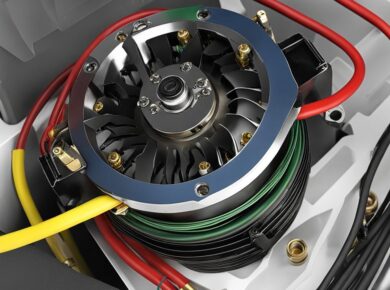If you’re a coffee enthusiast or a budding barista, you’ve probably encountered the frustration of brewing a cup that just doesn’t hit the right notes—like when your freshly ground beans taste more like bitter water than the rich, aromatic brew you envisioned. After helping countless clients perfect their coffee-making skills, here’s what actually works to elevate your home coffee game.
Understanding Your Coffee Beans
Choosing the Right Beans
Every great cup starts with quality coffee beans. The first step in your coffee journey is understanding the types of beans available. Arabica and Robusta are the two predominant varieties, with Arabica often being favored for its sweeter, more complex flavor profile. If you want a balanced cup, look for single-origin Arabica beans. They typically offer the best flavor clarity and can be sourced from regions like Ethiopia or Colombia, known for their unique taste characteristics.
Freshness Matters
Buying whole beans and grinding them just before brewing can dramatically enhance your coffee’s flavor. Coffee beans start to lose their freshness and aroma within minutes of being ground. Aim to consume your coffee within two weeks of roasting for optimal flavor. Here’s where most tutorials get it wrong: they suggest buying pre-ground coffee or beans that have been sitting on the shelf for months. Don’t do it! Invest in a good burr grinder to ensure even particle size, which is crucial for extraction.
Mastering the Brewing Process
Water Temperature and Quality
Did you know that water quality and temperature can make or break your brew? Using filtered water is essential; tap water can introduce unwanted flavors and chemicals. The ideal brewing temperature is between 195°F to 205°F (90°C to 96°C). If your water is too hot, it can extract undesirable bitter notes from the coffee. Conversely, water that’s too cool will result in under-extraction, leaving you with a sour taste.
The Perfect Coffee-to-Water Ratio
Another common pitfall is not measuring coffee accurately. For a standard drip coffee, aim for a ratio of 1:15 (1 part coffee to 15 parts water). That means if you’re brewing 300ml of coffee, you’ll need 20 grams of coffee. Use a scale to ensure precision; it’s a game changer!
Exploring Different Brewing Methods
Pour-Over Technique
The pour-over method allows for greater control over your brewing process, which can enhance flavor clarity. Start by placing a filter in your dripper and rinsing it with hot water to eliminate paper taste. Use a medium grind size, and bloom your coffee by pouring just enough water to saturate the grounds for 30 seconds before continuing to pour in a slow, circular motion. This technique helps release carbon dioxide, improving extraction.
French Press Secrets
The French press is another popular method that yields a full-bodied cup. Use a coarse grind and let your coffee steep for about four minutes before plunging. Here’s a pro tip: after plunging, immediately pour the coffee into your cup to avoid over-extraction and bitterness.
Common Mistakes and How to Avoid Them
Over-Extracting vs. Under-Extracting
Over-extracting occurs when coffee grounds are in contact with water for too long, leading to a bitter taste. Under-extracting happens when the brewing time is too short, resulting in sour notes. Experiment with your timing and grind size to find the sweet spot for your preferred brewing method.
Storage Solutions for Freshness
Never store your coffee in the refrigerator! This common mistake leads to moisture absorption and refrigeration odors affecting your brew. Instead, keep your beans in an airtight container in a cool, dark place. If you have a large batch, consider freezing some beans but be sure to let them come to room temperature before grinding.
Advanced Techniques for the Aficionado
Experimenting with Brew Variables
Once you’ve mastered the basics, don’t hesitate to experiment. Adjusting variables like grind size, brew time, and water temperature can lead to surprising flavor discoveries. For instance, if you find your coffee too acidic, try a coarser grind or a slightly higher temperature. If it’s too bitter, a finer grind and a shorter brew time might be the solution.
Understanding Flavor Profiles
Familiarize yourself with flavor notes to enhance your tasting experience. Coffee can have a wide range of flavors, from fruity and floral to nutty and chocolaty. Keeping a flavor wheel handy can help you identify and articulate what you’re tasting, making you a better judge of your brews.
Building Your Coffee Community
Joining Local Coffee Clubs and Online Forums
Engaging with fellow coffee lovers can be incredibly enriching. Joining local coffee clubs can provide access to tastings and workshops, while online forums like Reddit’s r/Coffee or specialized Facebook groups allow you to share experiences and ask questions. You’ll learn from the successes (and failures) of others, which can save you time and frustration.
Attending Workshops and Barista Courses
Consider investing in workshops or barista courses. This hands-on experience can provide invaluable insights into the nuances of coffee brewing. Many cities have local roasters that offer classes, and they can help you refine your technique while enjoying freshly brewed coffee.
Final Thoughts on Crafting Your Perfect Cup
Perfecting your coffee brewing skills is a journey filled with trial and error. Remember, every cup is an opportunity to learn, adapt, and enjoy. Now, here’s where most tutorials get it wrong: they fail to mention that the best coffee is the one you enjoy the most. Don’t be afraid to tweak recipes and techniques until you find what resonates with your palate.
So, whether you’re brewing for yourself or hosting friends, these tips will guide you toward making that perfect cup of coffee. Embrace the process, savor the flavors, and, most importantly, enjoy every sip!

